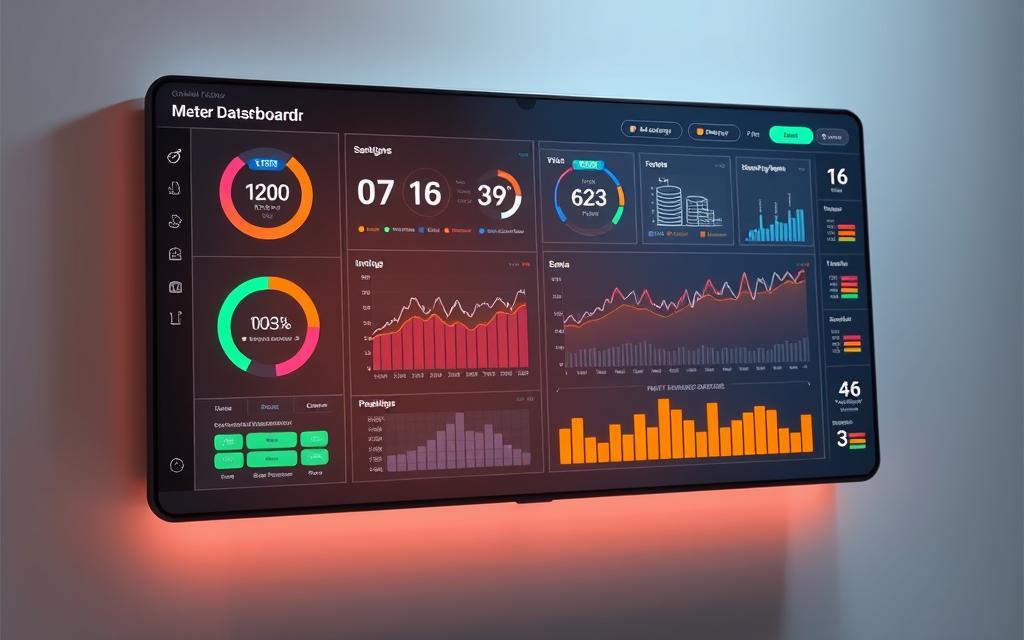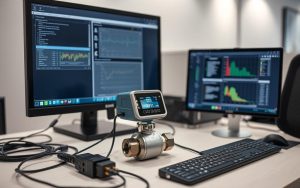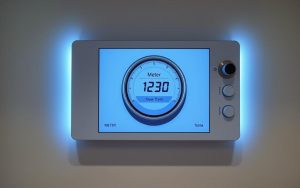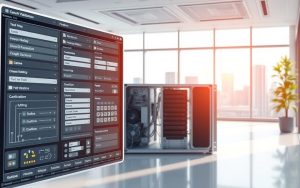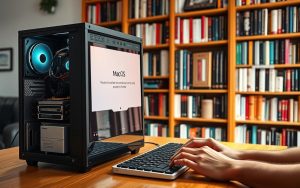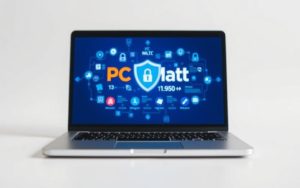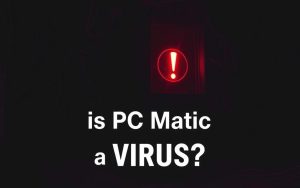Table of Contents
Managing utility readings manually can be time-consuming and prone to errors. Property managers and utility providers often struggle with inefficient processes that delay billing and reporting.
Modern solutions streamline this workflow through seamless integration. Schneider Electric’s Modbus protocol, for example, offers an industry-standard approach for accurate readings. Compatible devices like the EKM Omnimeter Pulse v.4 simplify the process across multiple meter types.
Automation eliminates manual entry challenges, reducing mistakes while saving hours of work. Cloud-based connections or USB interfaces provide flexibility for different operational needs.
This guide explores a straightforward three-step method: establishing connections, configuring settings, and verifying results. Whether tracking electricity, gas, or water usage, precise information ensures compliance and accurate billing.
Why Accurate Electronic Meter Data Input Matters
Incorrect readings can trigger financial and legal repercussions. A study of multi-unit properties revealed billing errors averaging 12%—costing landlords $4,500 annually per building. Tenants dispute charges when meter data mismatches actual usage.
Regulatory agencies mandate precision. Schneider Electric’s compliance guidelines note:
“Utility providers must maintain ±1% tolerance in reported electricity and water metrics.”
Failures risk fines or license suspensions.
Security gaps compound these risks. Unsecured connections expose:
- Tampered readings for theft or fraud
- Hacked networks disrupting control systems
- Fire hazards from overloaded circuits
A 2023 apartment case study showed 300% water usage spikes due to faulty meter data. Automated systems like EKM’s pulse counting cut errors by 98% versus manual logs.
Energy analysis tools transform raw numbers into cost-saving insights. Tracking peaks helps adjust HVAC schedules, reducing bills by 15–20%. Legal teams also rely on audit trails to resolve billing disputes.
Inaccurate electricity loads pose dire safety risks. Overlooked demand spikes can melt wiring—a leading cause of commercial fires. Modern systems flag anomalies in real time.
Understanding Electronic Meter Data
Advanced metering systems eliminate guesswork in utility monitoring. These devices capture precise measurements, translating physical usage into actionable insights. Whether tracking electricity, water, or gas, digital outputs ensure consistency.

What Is Electronic Meter Data?
Modern meters generate signals in two formats: pulse output and analog. Pulse-based systems, like EKM’s water meters, count closures per unit of consumption. Analog models measure continuous current but lack granularity.
The Modbus RTU protocol standardizes communication. It supports RS485 connections, enabling multi-device networks. Schneider Electric’s validation checks ensure data integrity during transmission.
Types of Electronic Meters
- Smart meters: Transmit real-time readings via cellular or Wi-Fi.
- Traditional digital models: Require manual retrieval but offer basic accuracy.
- Pulse-output devices: Ideal for water tracking with 3/4″ NPT pipe fittings.
Why Data Accuracy Is Critical
Commercial compliance demands ±1% tolerance. Deviations risk fines or system failures. Overloaded circuits, flagged by real-time alerts, prevent fire hazards.
Pulse counting mechanics—like debounce time—reduce errors by 98%. USB converters for Omnimeter systems simplify computer integration. Multi-meter setups scale for large properties.
Choosing the Right Tools for Meter Data Input
Selecting the best tools for utility monitoring ensures efficiency and precision. The right combination of hardware and software minimizes errors while maximizing workflow speed.
Essential Software Solutions
Schneider Electric ION and EKM Dash lead the market. ION excels in industrial-scale analytics, while Dash offers user-friendly dashboards for small properties.
Both support API integration, enabling seamless updates to billing systems. Cloud-based access ensures real-time tracking from any device.
Hardware and Setup Requirements
RS485-to-TCP converters bridge older meters to modern networks. For pulse-based models, USB cables with debounce filters prevent signal noise.
- Power over Ethernet (PoE): Simplifies installations by combining power and data in one cable.
- Waterproof enclosures (IP65-rated) protect outdoor units from harsh weather.
- Daisy-chain setups require unique addressing for multi-meter configurations.
Costs vary: Small deployments start at $200, while enterprise systems exceed $2,000. Wired CAT6 offers reliability, but Zigbee suits retrofit projects.
How to Input Electronic Meter Data into Computer Software
Streamlining utility tracking starts with proper device setup and configuration. Follow these steps to ensure accurate transmission from meters to your management system.

Establishing Hardware Connections
Begin with physical wiring between the meter and interface device. Pulse-output models require specific terminal block configurations:
| Terminal | Function | Wire Color |
|---|---|---|
| COM | Common ground | Black |
| NO | Normally open pulse | Red |
| NC | Normally closed (unused) | White |
For USB connections, install drivers before plugging in the interface. Schneider Electric’s iSerial converters auto-detect baud rates between 300-115200.
Configuring Software Parameters
EKM Dash users should set these critical values during initialization:
- Pulse multiplier: 1.0 for electric, 0.1 for water meters
- Debounce time: 20ms minimum to filter signal noise
- Data interval: 15-minute increments for most utilities
Firewall exceptions must allow traffic on port 502 for Modbus TCP. Enterprise systems like ION require additional certificate authentication.
Validating and Exporting Results
Perform these checks before finalizing the setup:
- Compare live readings against manual measurements
- Verify checksums match across transmission cycles
- Test CSV exports contain all required fields
Sample output formats should include timestamp, meter ID, and consumption values. Maintain a fallback log for manual entry during outages.
“Always validate against physical readings during the first 48 hours of operation.”
For troubleshooting, check device managers for unrecognized USB ports. Schneider systems provide diagnostic LEDs showing connection status.
Troubleshooting Common Meter Data Input Issues
Even reliable systems encounter occasional hiccups during integration. Quick diagnosis ensures uninterrupted information flow between devices and management platforms. Below are solutions to frequent challenges reported in Schneider Electric Community threads.

Connection Problems
Hardware issues often stem from wiring or network misconfigurations. Start by checking termination resistors on RS485 lines—missing resistors cause signal degradation over long cables.
Ground loops introduce noise in pulse wiring. Use this table to isolate problems:
| Issue | Solution | Tools Needed |
|---|---|---|
| Ground loop interference | Install isolation transformers | Multimeter, ferrite cores |
| Port conflicts (e.g., 2101) | Reassign ports via iSerial config | Schneider Electric Toolkit |
| Power fluctuations | Add surge protectors | Voltage stabilizer |
For phantom pulses, increase debounce time to 50ms in software settings. Duplicate meter addresses trigger control failures—verify each device has a unique ID.
Data Mismatches and Software Errors
Timestamp discrepancies often arise from unsynchronized system clocks. Sync all devices to an NTP server for consistency.
- CRC errors: Update Schneider ION firmware to patch checksum bugs.
- Permission issues in EKM Dash: Grant “admin” rights to user profiles.
- Data overflow: Limit pulse rates to 100Hz or enable buffering.
“Always test firmware updates in a staging environment before deployment.”
For unresolved cases, post detailed logs on vendor forums. Include baud rates and wiring diagrams to expedite support.
Best Practices for Efficient Meter Data Management
Optimizing utility tracking requires more than just accurate readings—it demands a structured approach to handling information. Implementing standardized processes minimizes errors while maximizing productivity for property managers and utility providers.

Automating Data Input
SNMP monitoring simplifies oversight of meter networks. Alerts flag anomalies like sudden spikes in water or electricity usage, enabling quick responses.
Cloud-based tools like EKM Dash automate CSV exports. Scheduled transfers ensure billing systems receive updates without manual intervention. Redundant gateways prevent disruptions during outages.
Regular Software Updates and Backups
Firmware updates patch security vulnerabilities and improve compatibility. Schneider Electric recommends quarterly checks for critical systems.
Follow this backup protocol to safeguard records:
| Backup Type | Frequency | Storage Location |
|---|---|---|
| Full system | Weekly | Encrypted cloud |
| Incremental | Daily | Local NAS |
| Meter calibration | Annual | Offsite server |
Train staff on disaster recovery steps. Document all changes to maintain audit trails for compliance.
“Historical archives resolve 78% of billing disputes by providing verifiable consumption records.”
Conclusion
Accurate utility tracking transforms operational efficiency for property managers. Automated meter systems cut errors and save time, delivering a clear ROI within months.
Emerging trends like AI-driven analytics turn raw data into actionable insights. For large networks, Schneider Electric offers scalable solutions, while EKM suits smaller deployments.
Prioritize cybersecurity for remote access. Regular maintenance—like firmware updates and backups—keeps systems reliable. Professional installation ensures complex setups run smoothly.
Precise data isn’t just compliance; it’s a competitive edge. Explore vendor documentation to optimize your meter networks today.
FAQ
What types of electronic meters are commonly used?
The most common types include smart meters, digital kWh meters, and advanced metering infrastructure (AMI) devices. Each serves different purposes but all provide accurate readings for billing and monitoring.
How do I connect my meter to a computer?
Use a USB port, RS-232 serial connection, or Ethernet cable, depending on your meter model. Ensure proper drivers are installed for seamless data transfer.
What software solutions work best for meter data management?
Energy monitoring software like Schneider Electric Power Monitoring Expert or Siemens EnergyIP provides reliable control and security for handling electricity consumption data.
Why is my meter not communicating with the software?
Check the connection port, power supply, and software configuration. Issues often arise from incorrect baud rate settings or outdated drivers.
How can I ensure data accuracy when importing readings?
Regularly calibrate your meter, verify data integrity in the software, and use automated validation tools to detect discrepancies.
What security measures protect meter data?
Encryption protocols, secure authentication, and firewall protection prevent unauthorized access. Always update software to patch vulnerabilities.
Can I automate meter data input?
Yes! SCADA systems and cloud-based solutions enable automatic data collection, reducing manual errors and saving time.
What should I do if my software shows incorrect readings?
First, verify the meter’s physical display. If mismatches persist, recheck software settings or consult the manufacturer for firmware updates.


